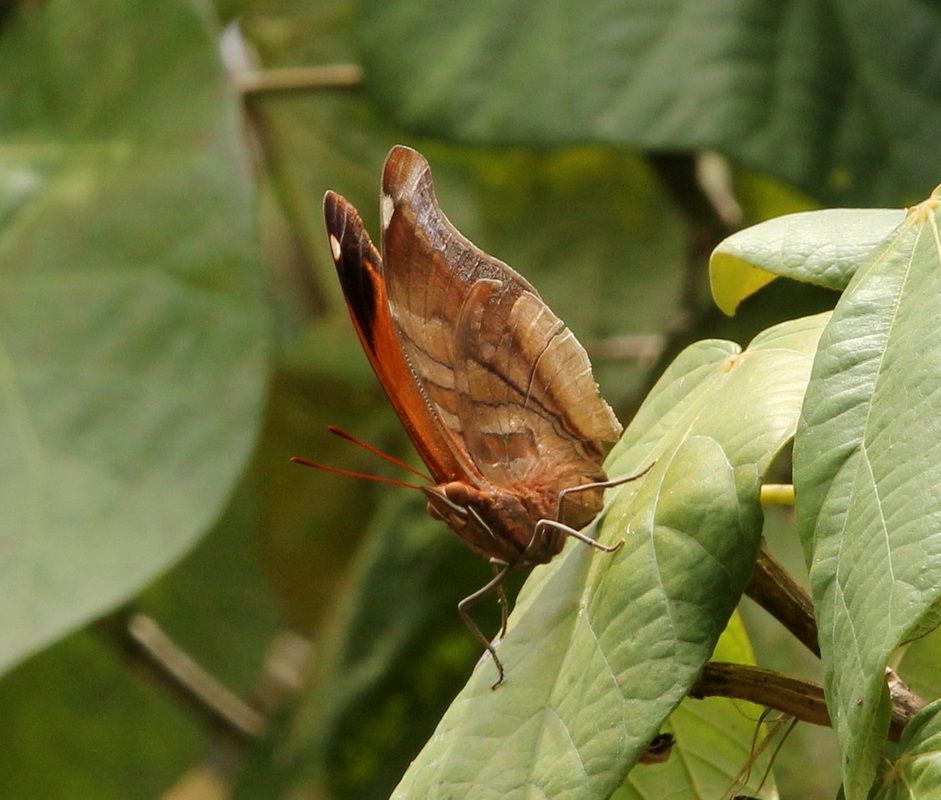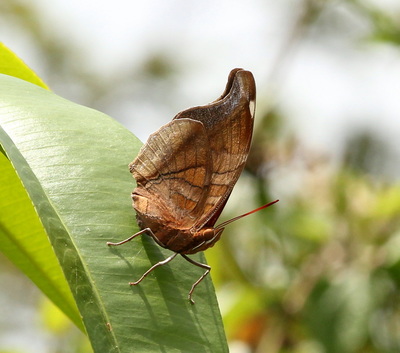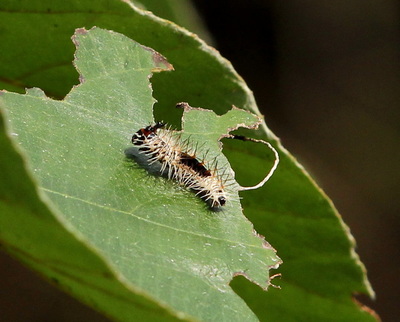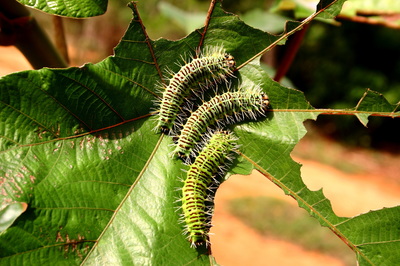Nymphalidae : Nymphalinae
Historis odius (Fabricius, 1775)
Stinky Leafwing / Orion Cecropian
Historis odius (Fabricius, 1775)
Stinky Leafwing / Orion Cecropian
Description and Similar Species: Wingspan 100-146mm. A large butterfly showing a large orange patch on the forewing if seen from above. Males often settle high up with head down readily chasing off intruders. It is much more common than the similar but smaller Tailed Cecropian H. acheronta which has distinctive 'tails' and additional white spots on the forewing upperside.
Range: Southern USA to Argentina and the Greater Antilles.
Status: In Cuba it is widespread in thick woods where it often flies high at tree-top level patrolling paths and ridges.
Nectar Plants: Feeds on rotten fruit and is not known to nectar at flowers.
Larval Foodplants: Eggs are laid singly on the leaf tips or underside of a leaf of Cecropia peltata (Urticaceae). Larvae grow up to 150mm and at first are black and white having a remarkable resemblance to the feeding damage on a leaf caused by the larva. They have a black and brown head and spiny tubercles, and expel a repellent chemical if disturbed which is perhaps the reason why they were called odius. The young larva forms a small platform or promontory of silk at the edge of a leaf to which it adds frass and on which it sits and which seems to afford it protection perhaps because ants or other insects will not venture onto it. Frass continues to be added even after the promontory is no longer used for resting. Larger larvae have a pale green background with brown and black lines. The pupa is pale brown and has a single row of six spiny tubercles.
Range: Southern USA to Argentina and the Greater Antilles.
Status: In Cuba it is widespread in thick woods where it often flies high at tree-top level patrolling paths and ridges.
Nectar Plants: Feeds on rotten fruit and is not known to nectar at flowers.
Larval Foodplants: Eggs are laid singly on the leaf tips or underside of a leaf of Cecropia peltata (Urticaceae). Larvae grow up to 150mm and at first are black and white having a remarkable resemblance to the feeding damage on a leaf caused by the larva. They have a black and brown head and spiny tubercles, and expel a repellent chemical if disturbed which is perhaps the reason why they were called odius. The young larva forms a small platform or promontory of silk at the edge of a leaf to which it adds frass and on which it sits and which seems to afford it protection perhaps because ants or other insects will not venture onto it. Frass continues to be added even after the promontory is no longer used for resting. Larger larvae have a pale green background with brown and black lines. The pupa is pale brown and has a single row of six spiny tubercles.
Egg
Larva
Pupa
Foodplant and habitat

















